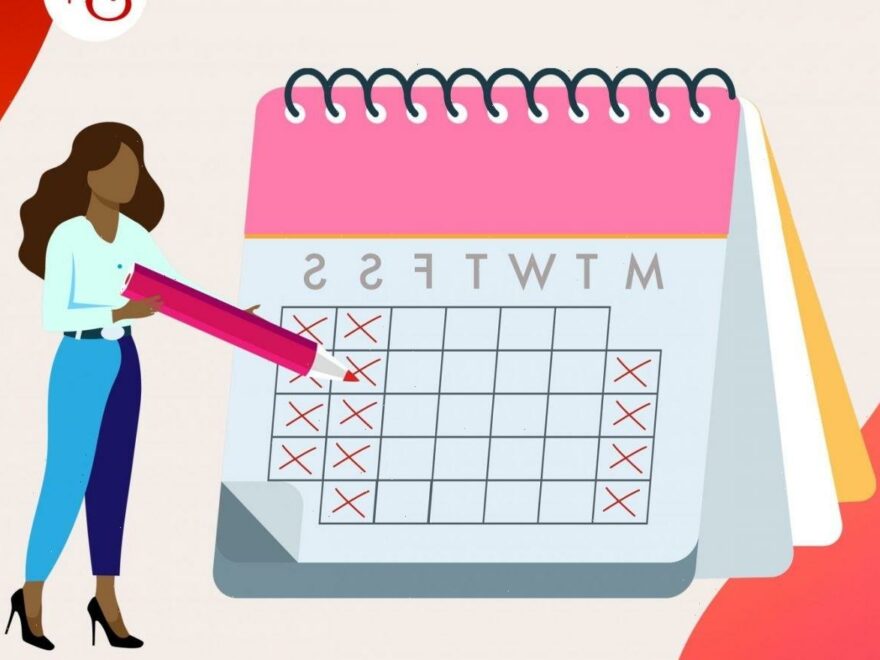Written by Sophie Wilkinson
Last month, thousands of UK workers embarked on the world’s biggest four-day working week trial. Charmaine St John, head of people at tech-company Hutch, has been taking part. Here, she shares her key learnings.
Lately, you might have heard rumblings about a lucky few taking part in a four-day working week on full pay and felt a pang of jealousy. In theory, it sounds like a dream scenario, right? Fewer hours, less commuting time, the same wage. But does it really mean less stress too?
The idea was first floated in the UK by the Labour party in 2019, who suggested it could improve everything from productivity and worker health to gender equality and the environment. And they weren’t alone in this assumption: more than half (52%) of women recently surveyed by LinkedIn said that a lack of flexibility at work has pushed them to leave or consider leaving a job, while 30% said that working more flexibly would improve their mental health.
Now, over three years later, the UK’s very own four-day working week trial is taking place. Spanning six months with over 3,300 workers at 70 companies across industries such as banking, hospitality, tech and care, it aims to assess whether productivity levels can remain the same on fewer days. To do this, the companies are working with non-profit 4 Day Week Global in partnership with the think tank Autonomy, the 4 Day Week Campaign and researchers at Cambridge University, Oxford University and Boston College.
But what is it actually like in practice? Are you simply exhausted by the end of the fourth day, with less meaningful contact with colleagues and a just-as-tough workload? Or is it the solution to burnout that we’re all hoping for?
Charmaine St John, head of people at Hutch, a London-based company that makes free-to-play mobile phone games, has been at her organisation for a year and a half and manages two other people. Her job is to look out for strategy, learning and development and colleagues’ wellbeing, and for the last month, she has been trialling the four-day working week.
A month in, she shares her learnings.
Simplify, simplify, simplify
“I’ll never forget how everyone’s jaws dropped when we announced the four-day working week trial in an all-staff video call. Instantly, the chat lit up with ‘this is the best company I’ve ever worked for’ and ‘thank you so much’.
“Having said that, a few people were unsure initially and we hadn’t really anticipated this – concerns ranged from productivity to the social aspect of the job, especially among those who lived alone, and we had to ensure those individuals felt supported too. We decided to not make it mandatory because of this, but by the time the trial had begun, 100% of the company had opted in.
“To squeeze five days’ worth of productivity into just four days of work means removing obstacles to getting the job done. So we’ve implemented measures like cutting meetings down to a maximum of 30 minutes where possible and rotating the team members who take part in each meeting. I would have previously asked my colleague to sit in on one I had yesterday for example, but now I’m really conscious of her time, so I’ll update her in our next one-to-one instead. Another colleague of mine has implemented no more than four to five hours’ worth of diary meetings a day, so he has 2-3 hours to work on what comes out of the meetings. If his daily diary meetings go above four or five hours, he rejigs them into the next day or week.
“I do the same with emails, too – I used to copy my team into a lotbut I’m conscious of the distractions now, so I think twice about whether they really need to be copied in. I’ll also always try to share an agenda before a meeting now, so everyone is aware of the points we need to discuss, and then we focus on actually getting through them.”
Efficiency is key
“We work two days (Monday and Wednesday) at home and two days (Tuesday and Thursday) in the office. We use office days for meetings, and days at home for time to focus on our individual work. After blocking out time in my diary to get things done, I’ve been testing ways to boost my productivity – lately the Pomodoro Technique has been working well. It involves working for 25 minutes, breaking for five, and then continuing that pattern to help with focussing on tasks.
It’s been important to seek out these more efficient ways of working. We know a four-day week would allow people to feel well-rested and come back focused. The team is also committed to making it work – some people are emailing themselves updated to-do lists on Thursday afternoon so it can be fresh in their minds on Monday. It’s amazing what people can achieve once you’ve all got a shared goal.”
Quiet time is a must
“We sit in an open plan office and, since the trial began, we’ve been experimenting with ways to seek out quiet. Meeting rooms are at a premium so we’ve started using the bar area upstairs, which isn’t often used in the day, as a quiet zone. This way, you can get your head down – no meetings, no chat. Another idea was to indicate when you need some quiet time at your desk – having a flag in your pencil pot to say ‘Hey, I’m busy, I just need one hour to concentrate’ for example. Another member of the design team mentioned that at her previous job they had a desk traffic light system (red for busy, green for OK to chat) which would demonstrate something similar for a bit of uninterrupted time, so we’re considering implementing that too.
While that’s in the works, Monday’s quiet hour has been a revelation. There’s just so much to get on with on a Monday, especially after a three-day weekend. So at 11am, we have our 30-minute team catch up, discuss our top-three priorities that week and then we turn off our notifications and don’t message each other unless it’s urgent. It allows us to crack on with what’s needed for the week ahead.”
The power lunch is back
“Research shows companies that eat together are more productive. In fact, some US research says fire stations that eat together actually put out fires better. Because of this, we’re going to try out implementing something called the big eat, where we eat together as a whole company once a week or month. Making sure we do things like this to keep up morale despite the increased focus on productivity will be key to making this a success.”
Colleagues matter more than ever
“It’s important to remember that nattering with a colleague isn’t just wasting time though, it’s an important part of maintaining that connection. We have a social committee which organise days to get together and get to know each other better. Recently, we held a day packed with making puzzles, board games, Lego making and pizza. Thursdays are also the new Fridays for us, so a few weeks ago my team and I went along to the Brasserie of Light at Selfridges. We had a moment to stop and think: ‘Wow, we have Friday off!’
Some people have asked me: ‘What happens if it all fails?’ But I don’t think there’s an option for us; everyone is behind this. Instead, I’m focused on making sure we’ve got continual check-in points and are taking in measures to adjust, listen and improve. There’s a good chance we might permanently pivot to a four-day week after the trial is over, but even if we don’t, we’ve picked up some great efficiency tools that will never leave us.”
Images: Getty
Source: Read Full Article

